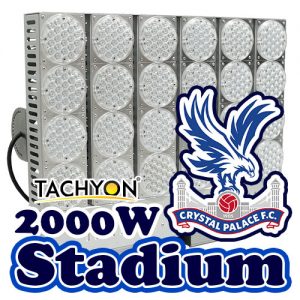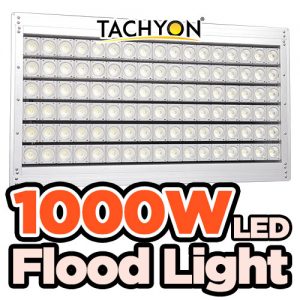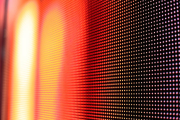What is Color Gamut
Color gamut determines the color richness of a display. As we all know, CRT displays and liquid crystal displays are based on three-primary color imaging, and the colors presented by the display are a partial collection of the three primary colors, but there is no way to express all the colors of visible light. The color gamut value represents the range of colors that the monitor can present. The larger the color gamut, the richer the degree of a color that can be displayed on the display screen, and the more vivid the color.
For liquid crystal displays, major manufacturers are committed to improving the color gamut range of liquid crystal displays. At present, the color gamut value of mainstream liquid crystal displays is about 70% of NTSC, while the wide color gamut liquid crystal display needs to reach more than 90% of NTSC. Because the liquid crystal itself does not emit light, it displays images by light through the backlight. Therefore, its color gamut range is mainly affected by the backlight source.
Commercially available wide color gamut liquid crystal displays mainly achieve a higher color gamut range by improving the composition of the conventional CCLF phosphors (or adding a layer of coating). This makes the light emitted by it whiter and more stable, in order to achieve the purpose of improving the NTSC color gamut.
Since this method is not technically difficult to implement and the cost will not increase too much, many manufacturers have supported it. But it must be seen that this method is not the best choice after all. With the help of this technology, the color gamut range of liquid crystal displays is also difficult to exceed NTSC100%. So is there any way to fundamentally solve this problem? At present, LED is the only answer!
Best Answer for Wide Color Gamut: LED Light Emitting Diode
The current industry consensus is that the use of LED backlight is the best way to improve the color gamut of LCD monitors. The so-called LED, or light-emitting diode, is a semiconductor solid-state light-emitting device. It uses solid semiconductor chips as light-emitting materials. When a forward voltage is applied across the two ends, the carriers in the semiconductor recombine to cause photon emission to produce light. LEDs can directly emit red, yellow, blue, green, cyan, orange, purple and white light. This type of LED backlight technology has long been used on notebook computer screens and LCD TVs, but there is not much practice on desktop LCD monitors.
True Full White Light Source
Cons of CCFL
As mentioned earlier, the liquid crystal of the liquid crystal display itself does not emit light, but displays images by the light passing through the backlight. Therefore, the backlight template of the LCD has a decisive effect on the color gamut.
The current mainstream CCFL (Cold Cathode Backlight) is limited by the luminous range, and cannot allow the liquid crystal display to achieve a wide color gamut display range. Therefore, the color gamut range of the current mainstream liquid crystal displays is only about 70% of NTSC. Even if the improved design makes it have a larger color gamut range, the effect is not very satisfactory. At the same time, it may also bring about the consequences of reducing the life of the lamp.
Comparison of LED and CCFL
In view of the shortcomings of CCFL (cold cathode backlight), light-emitting diodes have been placed high hopes. Compared with CCLF cold cathode fluorescent lamps, LEDs have the advantages of wide color gamut, adjustable white point, high dimming rate and long life. At present, there are mainly two types of feedback LED backlights and combined LED backlights.
In terms of color that everyone is most concerned about, the LED backlight can be dispersed by a lightguide and then reflected by a reflector to achieve a uniform brightness. In addition, the accompanying software can fully control the color backlight, which means that there is no need to compensate for the shortcomings of the lamp tube, and a truly complete white light source can be achieved.
In addition, with the help of built-in sensors and circuits, users can also adjust the backlight in SpectraView according to their needs. That is to say, the colors are richer and can provide a range of colors that ordinary LCDs cannot present. At present, the color gamut range of LCDs using LED backlights can reach more than 110%.
Three advantages of LED light-emitting diodes
In addition to solving the problem of wide color gamut, LED light-emitting diodes have more advantages over CCFL cold cathode backlights. The first point is environmental protection.
In the LCD with CCLF cold cathode fluorescent lamp as the backlight source, an indispensable element is mercury. And this element is undoubtedly harmful to the human body. Although manufacturers have tried their best to reduce the mercury content in fluorescent tubes, a completely mercury-free fluorescent tube will bring some new technical problems, and there is no prospect of realization for the time being. The advantage of LED backlight is that it does not contain mercury at all, which is in line with the fashion of green environmental protection.
In addition to environmental protection, LED backlights are also very power-saving. Its power consumption is lower than that of CCFL cold cathode backlight. LED internal driving voltage is much lower than CCFL, power consumption and safety are better than CCFL (CCFL AC voltage requirements are relatively high, reaching 1,500 ~ 1,600Vac at startup, and then stabilized to 700 or 800Vac). The LEDs only need to work at 12 to 24Vdc or lower. In addition, although the luminous efficiency of CCFL is not inferior to that of LED, because CCFL is scattered light, a lot of light is wasted in the process of emitting light. In this way, it appears that the efficiency of LED light is higher.
In addition, LED backlights have a longer lifespan than CCFLs. Generally speaking, the rated service life (semi-bright) of different CCFLs is between 8,000 and 100,000 hours, while LED backlight sources can reach about twice that of CCFLs. Of course, the service life of the LED backlight is also affected by thermal management.
Status of LED Backlight LCD
As the best choice to replace CCFL cold cathode fluorescent tubes, LED light-emitting diodes are not widely used in desktop liquid crystal displays at present. It can be said that it is in its infancy, but from the current product strategies of major manufacturers, LED backlight LCDs will emerge in large numbers.
On the panel side, many companies announced the start of production of 24-inch LCD panels using LED light sources. And said it can be comparable to a high level of TV picture quality. The color gamut range can reach 111% of the National Television Standards Committee, NTSC standard, which is the so-called true wide color gamut.
In addition to large-screen LCD, many companies have also introduced 19- and 22-inch RGBLED backlight panels and shipped them to Acer and ViewSonic. Then, another LCD panel with LED backlight appeared on the market, with a size of 20.1 inches.
In terms of products, as a promoter of wide color gamut LCDs, China’s Lenovo Group officially launched its first LCD with LED backlight as early as early 2007. Its color gamut range reaches 114%. Of course, this product is aimed at professional-level users.
Conclusion
It can be seen that major manufacturers have already begun to take action in the research and development of LED backlight LCD. According to industry forecasts, LCD with LED backlight will begin to emerge in large numbers and become the main choice in the market.
Although LED backlight LCD has a larger color gamut range, we must also note that consumers’ acceptance of wide color gamut LCD displays needs to be further strengthened. Judging from the current situation, some users have reflected that after comparing the wide color gamut liquid crystal display with the ordinary liquid crystal display, although they feel that the color of the wide color gamut liquid crystal display is richer and brighter, the feeling is that the richness and vividness are a bit fake.
In addition, the price issue is also the main factor restricting the wide color gamut LCD’s acceptance by the market. Of course, it is undeniable that, as a new generation of LCD focus technology, the emergence of LED backlight will undoubtedly give us more choices and lead us into a new horizon.






